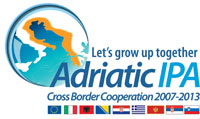
| Address Špire Brusine 16, 23000 Zadar, Hrvatska-HR Telephone: 00385 23 211747 Facsimile: 00385 23 213923 E-mail: Ova e-mail adresa je zaštićena od spambota. Potrebno je omogućiti JavaScript da je vidite. Web page: www.hgk.hr President: Dario Jurin, B. Sc. (Econ) |
Contact person Marija Mišulić, International Relations Department Telephone: 00385 23 211747 E-mail: Ova e-mail adresa je zaštićena od spambota. Potrebno je omogućiti JavaScript da je vidite. |
Brief description
The Croatian Chamber of Economy is an independent professional and business organisation of all legal entities engaged in business. It was established in 1852, organised in European tradition and on the so-called continental model of Austrian and German chambers with compulsory membership. Every company registered with the Commercial Court is a member of the Chamber.
The Croatian Chamber of Economy consists of the Headquarters in Zagreb and 20 county chambers. Among these, the Zagreb Chamber represents both the City of Zagreb and Zagreb County. Functionally, the CCE consists of 8 departments dealing with the respective branch of the economy, and it also includes 40 professional associations, 87 groups and 19 affiliations. Apart from this, within the CCE act five business centres, Permanent Arbitration Court, Conciliation Centre, Court of Honour and CCE Office for Areas of Special State Concern.
Brief description of the territory
ZADAR COUNTY - GEOGRAPHY AND POPULATION
Zadar County total territory: 7,270 sq km (8,2% of the Republic of Croatia)
Mainland and islands area: 3,638 sq km (6,4% of the Republic of Croatia)
Sea area: 3,632 sq km (11,6% of Croatia)
Inhabitants: 170,398 (3,7% of Croatia)
Population density: 44 inhabitants per sq km
Capital: Zadar (75,082 inhabitants)
5 other towns (Biograd, Benkovac, Nin, Obrovac and Pag)
28 municipalities.
Zadar County, by its geographic position, occupies a very important place in the Republic of Croatia. It has great significance and role in the transport linking of the Croatian north and south, in the road and in rail traffic. In Zadar the pan-European transversals North - South and the Adriatic - Ionian itinerary intersect.
A special feature of the Zadar County is the fact that most of the land area lies in the Ravni kotari - land suitable for agricultural production, where agricultural land occupies 231,746 ha, of which 68,976 hectares are arable. Abundant reserves of water come from the Zrmanja and Krka rivers and the lake Vransko jezero and many smaller streams.
Given the favorable geographical position, mild climate, indented coastline, water quality along the 1,300 km of coastline and islands, this area has a very great potential for tourism development.
In the Zadar County there are more than 3,100 registered companies with a total of 20,300 employees. Zadar County's economy is based on trade, manufacturing, tourism, maritime transport, construction, fisheries and agriculture, and handicrafts.
The most important economic sector by income and the number of employees is the Trade with about 30% of total revenue and 23% share in the structure of employment in the economy. The second place is taken by the Manufacturing industry, with numerous manufacturing enterprises in the county.
About 13% of total revenue and 8% of the employees is related to the Transportation and storage.
The Construction sector’s share in the total revenue is about 8% and 10% in the total number of employees.
Although the data of about 7% of total turnover and 10% of employees in the economy of the Zadar County do not seem important, the activity sector Providing accommodation and food services (Tourism) is the driver of the economic life and the most promising development branch in this area. To the leading companies of the sector crafts and households involved in tourism, builders who build, equip and maintain facilities and numerous vendors are related.
Fisheries and aquaculture, and partly agriculture account for about 8% of total revenue, 7% of employees and 25% of the County’s exports. The Zadar County is the seat of the majority of the Croatian tuna farmers and of the largest grower of white fish. It also has the highest concentration of the fishing fleet in Croatia (fishing cooperatives, enterprises and numerous fishing crafts). The total agricultural land surface is 231,746 ha. According to the structure, arable land and gardens surface is 45,868, orchards 2,515, olive groves 2,727, vineyards 5,931 and meadows 11,935 ha. The total arable land’s surface is 68,976 ha, and the pastures’ surface is 162,770 ha. The Ravni kotari area is suitable for the cultivation of fruits and vegetables, breeding cows, and in the last ten years numerous perennial plantations of olives, grapes and figs have been erected, with a simultaneous development of production capacity for the processing of these Mediterranean cultures.
















